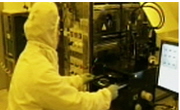DNA 증거는 흔히 ‘99.99%’라는 수사(修辭) 그대로 고도의 신빙성을 갖춘 증거로서 받아들여지고 있다. 그러나 DNA 증거 역시 그 수집‧인계 및 분석 등 각 이전 과정에서 인위적인 조작을 필요...
http://chineseinput.net/에서 pinyin(병음)방식으로 중국어를 변환할 수 있습니다.
변환된 중국어를 복사하여 사용하시면 됩니다.
- 中文 을 입력하시려면 zhongwen을 입력하시고 space를누르시면됩니다.
- 北京 을 입력하시려면 beijing을 입력하시고 space를 누르시면 됩니다.
증거물 보관의 연속성 확인 절차로서 증거배제신청(Motion in Limine) - DNA 증거를 중심으로 = Motion in Limine as a procedure to confirm the Chain of Custody - Focusing on DNA Evidence
한글로보기https://www.riss.kr/link?id=T15854064
- 저자
-
발행사항
서울 : 경찰대학 치안대학원, 2021
-
학위논문사항
학위논문(석사) -- 경찰대학 치안대학원 , 수사학과 수사법제전공 , 2021. 2
-
발행연도
2021
-
작성언어
한국어
-
주제어
증거물 보관의 연속성 ; DNA ; 증거배제신청 ; 연방증거규칙 ; 진정성 입증
-
발행국(도시)
서울
-
형태사항
181 ; 26 cm
-
일반주기명
지도교수: 이동희
-
UCI식별코드
I804:41007-200000375656
- 소장기관
-
0
상세조회 -
0
다운로드
부가정보
국문 초록 (Abstract)
DNA 증거는 흔히 ‘99.99%’라는 수사(修辭) 그대로 고도의 신빙성을 갖춘 증거로서 받아들여지고 있다. 그러나 DNA 증거 역시 그 수집‧인계 및 분석 등 각 이전 과정에서 인위적인 조작을 필요로 하므로 필연적으로 감정결과의 오류 또는 한계가 존재할 수밖에 없다. 이처럼 DNA 증거와 같은 물적 증거의 이전 과정에서 존재하는 오류 또는 한계가 당해 증거의 진정성 내지 동일성 유지에 영향을 끼칠 때, 문제되는 것이 바로 ‘증거물 보관의 연속성(Chain of Custody)’ 확보 여부이다.
증거물 보관의 연속성 개념은 형사소송법상 전형(典型)된 증거능력 판단 기준은 아니나, DNA 증거와 함께 대표적인 법과학 증거 중 하나인 디지털 증거의 경우 증거물 보관의 연속성 확보를 증거능력 인정 요건으로 보는 것이 대법원의 입장이다. 이른바 ‘일심회 사건’(대법원 2007.12.13 선고 2007도7257 판결)에서 대법원은 디지털 증거 자체의 “동일성 및 무결성”이 확보되지 않은 경우에는 그 증거능력을 부인하였다. 이 판결은 이후 유사 사건에서 디지털 증거의 증거능력 판단 기준으로 확고히 자리 잡게 되었고, 수사기관의 디지털 증거 압수·수색 실무상 해시값(Hash Value) 일치 여부 확인 절차를 자리잡게 하였으며, 2020. 제정된 「검사와 사법경찰관의 상호협력과 일반적 수사준칙에 관한 규정」 제42조에서는 디지털 증거의 동일성과 무결성 보장 의무를 정하기에 이르렀다. 이와 달리 대법원은 DNA 증거의 증거능력 판단 시, 과학 기술의 허용성 여부에 관하여 일반적으로 검토되는 ‘도버트 심사(Daubert Test)’나 전문법칙 예외 인정 요건 정도만을 언급했을 뿐, DNA라는 물적 증거 자체의 진정성에 관하여는 현재까지는 증명력의 문제로 접근하고 있는 것으로 보인다.
그러나 증거물 보관의 연속성 확보에 실패함으로써 그 진정성이 의심되는 증거라면 디지털 증거와 마찬가지로 그 증거능력을 부인해야 할 것이며, 디지털 증거와 DNA 증거 간 증거의 진정성 입증 문제를 다르게 취급할 이유는 없어 보인다. 특히 국민참여재판의 주된 대상이 되는 성범죄나 살인 사건 등에 있어서 DNA 증거가 배심원단에게 피고인의 유무죄 여부를 가르는 결정적인 증거로 취급되는 현실을 감안한다면, 증거물 보관의 연속성이 확보되지 않아 그 진정성이 의심되는 DNA 증거를 공판정에 무차별적으로 현출시키는 현재의 재판 실무에 대한 우려가 있다.
이에 본 연구는 형사 재판에서 DNA 증거에 기초한 사실인정을 구체적 사례를 통해 살펴보면서 증거물 보관의 연속성 확인이 사실인정 과정에서 갖는 중요성을 검토하여 증거물 보관의 연속성 확인이 우리 증거법 체계상 어떻게 위치되어야 하는지를 논증하고, 구체적인 법제도 개선 방안을 제안하고자 한다. 증거물 보관의 연속성은 물적 증거의 진정성에 관한 문제로서, 미국에서는 「연방증거규칙(Federal Evidence Rules)」에 따라 ‘위법수집증거배제법칙’이나 ‘전문법칙’의 적용 전 선결문제로서 다뤄지고 있다. 이에 따라 국내에서도 증거물 보관의 연속성 확보 여부는 증명력이 아닌 증거능력의 문제로 다뤄져야 함을 논증한 선행 연구도 다수 존재한다. 다만, 공판절차에서 그 구체적인 적용에 관하여는 형사소송법상 새로운 증거능력 판단 기준으로 세울 것인지, 기존의 전문법칙 예외 규정에 포섭시켜 판단할지 등 다양한 방법론적 검토가 있다.
본 연구는 모든 유형의 증거에 대하여 그 진정성 입증을 요하는 내용의 증거법 조문이 형사소송법에 신설되어야 한다는 주장을 지지하면서, 이를 위하여 미국의 민·형사소송에서 소송전(pre-trial) 절차로서 적극 활용되는 ‘증거배제신청(Motion in Limine)’을 검토한다. 우리나라의 공판 절차는 증거능력에 관한 심리가 본안 심리와 병행하여 이루어지면서, 진정성이 의심되는 증거의 현출을 막기 어렵다. 이와 달리 미국의 형사소송 실무에서 활용되는 증거배제신청은 공판 전 또는 공판기일과 별개로 증거의 진정성에 관한 심리를 가능하게 하여, 법원의 증거채부결정이 신중하고 면밀한 검토 하에 이뤄질 수 있도록 기능하고 있다.
따라서 본 연구는 우리 형사재판 실무에 있어 물적 증거의 진정성 확인을 위한 증거배제신청의 적용 가능성 및 그 필요성을 검토함으로서, 증거물 보관의 연속성 확보가 증거법상 어떻게 위치지어야 하는지, 그에 관한 법원의 증거채부심리 절차가 어떠한 방식으로 이뤄져야 하는지 살펴보고자 한다.
다국어 초록 (Multilingual Abstract)
DNA evidence is commonly accepted as evidence with high credibility as it is the rhetoric of “99.99%”. However, since DNA evidence also requires artificial manipulation in each transfer process, such as its collection, handover, and analysis, ther...
DNA evidence is commonly accepted as evidence with high credibility as it is the rhetoric of “99.99%”. However, since DNA evidence also requires artificial manipulation in each transfer process, such as its collection, handover, and analysis, there is inevitably an error or limitation of the analysis result. When errors or limitations that exist in the process of transferring physical evidence such as DNA evidence affect authentication or identifying an item of evidence, it is necessary to check whether the ‘Chain of Custody’ is secured.
The concept of chain of custody is not a criterion for judging the typical admissibility of the Criminal Procedure Act, but in the case of digital evidence, which is one of the representative forensic science evidence along with DNA evidence, the Supreme Court judges securing chain of custody as one of the requirement for admissibility. In the so-called ‘Ilsimhoe case’(Supreme Court Decision 2007Do7257 Decided December 13, 2007) - National Security Act Violation case, the Supreme Court denied admissibility if the “identity and integrity” of the digital evidence itself was not secured. This ruling has since been firmly established as the criterion for determining the admissibility of digital evidence in similar cases, and has established a procedure for confirming whether the hash value is consistent in the practice of digital evidence seizure and search by investigative agencies. In addition, in Article 42 of the Regulations on General Investigation Rules and Mutual Cooperation between Prosecutors and Judicial Police Officers enacted in 2020, the obligation to ensure the identity and integrity of digital evidence came to a decision. In contrast, when determining the admissibility of DNA evidence, the Supreme Court only mentions the Daubert Test which are generally reviewed on the admissibility of science technology, and the requirement of the exceptions to the rule against hearsay. As for the authentication of the physical evidence itself as DNA, it seems that it is approaching as a matter of Probative Value until now.
However, if the authenticity of DNA evidence is questioned by failing to secure the chain of custody, the admissibility of the evidence should be denied as with digital evidence, and there seems to be no reason to treat the authentication differently between digital evidence and DNA evidence. In particular, given the reality that DNA evidence is treated as conclusive evidence to determine whether the accused is guilty or not guilty to the jury in sex crimes or murder cases, which are the main targets of the participatory trial, there are concerns about the current trial practice because DNA evidence that is suspected of its authenticity due to the lack of chain of custody are being presented to the court indiscriminately.
Therefore, this study examines fact-finding based on DNA evidence in criminal trials through specific cases and the importance of checking the chain of custody in the fact-finding process. I would like to demonstrate how the chain of custody check should be placed in our evidence law system, and propose a concrete legal system improvement plan. The chain of custody is a matter of the authentication of physical evidence, and in the United States, according to the Federal Evidence Rules, it is treated as a prerequisite before the application of Exclusionary Rule of the Illegally Obtained Evidence or the Rule Against Hearsay. Accordingly, there are many previous studies in Korea that have demonstrated that whether to secure the chain of custody should be dealt with in terms of admissibility rather than probative value. However, with regard to the specific application of the trial proceedings, there are various methodological reviews, such as whether to establish a new standard for admissibility under the Criminal Procedure Act, or whether to be included in the existing exceptions to the rule against hearsay.
This study supports the assertion that provisions requiring authentication for all types of evidence should be established in the Criminal Procedure Act, and for this purpose, reviews ‘Motion in Limine’ that is actively used as a pre-trial procedure in the US civil and criminal proceedings. In the trial proceedings in Korea, it is difficult to prevent the presentation of evidence that is suspected of authenticity, as the hearing on the admissibility is conducted in parallel with the merit hearing. In contrast, a Motion in Limine used in the practice of criminal proceedings in the United States enables a hearing on the authentication of the evidence before or independently of the trial date, so that the court's ruling on evidence can be made under careful review.
Therefore, by examining the applicability and necessity of a Motion in Limine to confirm the authenticity of physical evidence in the criminal trials, this study aims to look at how securing the chain of custody should be located in the evidence law, and how the court's ruling on evidence procedure regarding it should be carried out.
목차 (Table of Contents)
- 제 1 장 서 론 1
- 제 1 절 연구의 배경 및 목적 1
- 1. 연구의 배경 1
- 2. 연구의 목적 6
- 제 2 절 연구의 범위 및 방법 8
- 제 1 장 서 론 1
- 제 1 절 연구의 배경 및 목적 1
- 1. 연구의 배경 1
- 2. 연구의 목적 6
- 제 2 절 연구의 범위 및 방법 8
- 1. 연구의 범위 : DNA 증거 8
- 2. 연구의 방법 10
- 제 2 장 DNA 증거에 의한 사실인정 13
- 제 1 절 DNA 증거 개관 13
- 1. DNA 13
- 2. DNA 감정의 대상 16
- 3. DNA 분석 기술 18
- 제 2 절 DNA 증거의 수집 및 분석 22
- 1. 경찰과 국립과학수사연구원 22
- 2. 수사기관의 현장 감식 : DNA 시료의 수집 및 보관 24
- 3. 국립과학수사연구원의 감정 : DNA 분석 32
- 제 3 절 DNA 증거에 의한 사실인정의 특수성 35
- 1. 증거에 의한 사실인정 단계 : 증거능력과 증명력 35
- 2. DNA 증거의 증거능력 및 증명력 판단 기준 38
- 3. DNA 증거에 의한 사실인정 시 고려사항 42
- 4. 제2절 3. 준강간 사건의 사실인정 과정에서의 오류 48
- 제 4 절 소 결 52
- 제 3 장 증거물 보관의 연속성의 증거법상 지위 54
- 제 1 절 증거물 보관의 연속성 54
- 1. 개념 54
- 2. 증거물 보관의 연속성 보장에 관한 법령 55
- 제 2 절 국내 선행 연구 검토 57
- 1. 증거물 보관의 연속성에 관한 수사기관과 학계의 논의 차이 57
- 2. 증거물 보관의 연속성에 관한 증거법적 검토 59
- 3. DNA 증거의 증거물 보관의 연속성에 관한 증거법적 검토 61
- 제 3 절 증거물 보관의 연속성에 관한 국내 판례 64
- 1. 증거물 보관의 연속성에 관한 판례상 정의 64
- 2. 증거물 보관의 연속성의 증거법상 지위에 관한 판례 해석 67
- 3. DNA 증거의 증거물 연속성에 관한 판례 검토 72
- 제 4 절 미국 연방증거규칙상 증거물 보관의 연속성 79
- 1. 진정성 입증 수단으로서 증거물 보관의 연속성 79
- 2. 연방증거규칙상 증거물 보관의 연속성의 지위 87
- 제 5 절 소 결 96
- 제 4 장 증거배제신청의 적용 검토 99
- 제 1 절 미국 형사소송절차에서 증거배제신청 99
- 1. 개념 99
- 2. 법적 근거 102
- 3. 증거배제신청 사유 및 절차 110
- 4. 형사소송절차상 증거배제신청의 기능 114
- 제 2 절 증거물 보관의 연속성에 관한 증거배제신청 118
- 1. 증거배제신청 사유로서 증거물 보관의 연속성 확보 여부 118
- 2. DNA 증거에 대한 증거배제신청 사례 122
- 제 3 절 증거물 보관의 연속성 확인을 위한 증거배제신청 절차의 적용 126
- 1. 증거채부결정의 내실화 필요성 126
- 2. 증거물 보관의 연속성 확인을 위한 증거심리 개선방안 130
- 제 4 절 소 결 135
- 제 5 장 결 론 138
- 제 1 절 연구의 시사점 138
- 제 2 절 연구의 한계점 140
- 참 고 문 헌 143
- Abstract 169











